Succulent plants, with their stunning looks and low-maintenance appeal, are often cherished as potted plants by many gardening enthusiasts. Not only that, these juicy little succulents also attract some unwanted guests like Armyworms / Caterpillars, who sneak into the succulent stems, feasting away. When you spot them, your succulent might be in peril. So, how do you shoo away those unwanted guests? Let's dive into the solutions in this article. Take a look:
Where Do Caterpillars on Succulents Come From?
Certainly, caterpillars don't just appear out of thin air. They're usually the larvae of butterflies or moths. Recall if you've seen these fellows around your room or succulents:
They could be Spodoptera frugiperda, Cactoblastis cactorum, looper moth, Pieris rapae, aged butterflies, and moths. They are harmless to succulents, but they lay eggs on the succulent leaves, which hatch into caterpollars that feed on succulents.
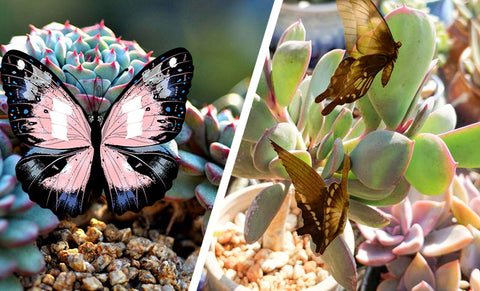
Are Caterpillars Harmful to Succulents?
Absolutely! When you find caterpillars in the roots or stems of your succulents, they've already been munching on them. These nibbled wounds, exposed in the complex soil environment, can become infected by fungi like Rhizoctonia, leading to root or stem rot issues in succulents. Additionally, caterpillars deprive succulents of nutrients, which can result in stunted growth.
How to Get Rid of Caterpillars
Tweezer Removal:
When you find caterpillars on your succulents, the quickest way is to tweeze them out, keeping them away from your garden. Dispose of them in the trash or gently relocate them outdoors if you prefer not to harm them.
Use Neem Oil:
Neem oil, a natural plant ingredient, suffocates most pests and is harmless to humans, pets, and plants. Mix neem oil with water and spray it on succulents. After some time, you'll find caterpillar corpses in the pots. Clean up promptly. You may wonder: How to Use Neem Oil on Your Succulents and Cactus.
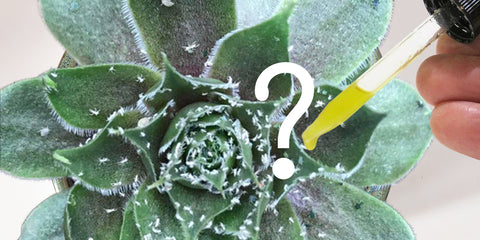
Systemic Insecticides:
If the above methods fail to solve the caterpillar crisis, local laws permit the use of systemic insecticides. These can help repel caterpillars and protect against pests like mealybugs, spider mites, etc. Check the label before use to prevent overdosing and harming your succulents.
How to Detect Caterpillar Infestation on Succulents
Slow Growth:
When one succulent is lagging while others are growing, it's a sign to check for the reason. There might be a hidden caterpillar munching on it.
Chewed Leaves:
Many insects, like snails and caterpillars, enjoy munching on succulents. Inspect your succulent leaves for caterpillars if you notice apparent bite marks.
Feces:
Caterpillars excrete feces while feeding on succulents, usually black or brown pellets.
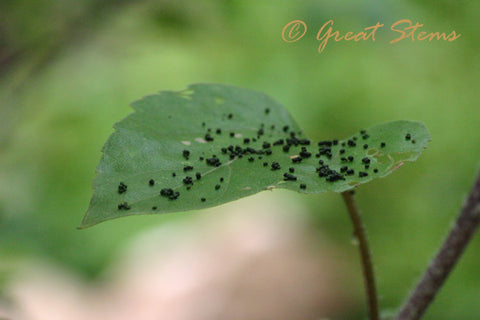
Image Credit: greatstems.com
Eggs:
Butterflies or moths may lay eggs on succulent leaves, typically oval and white. Remove them promptly upon discovery.
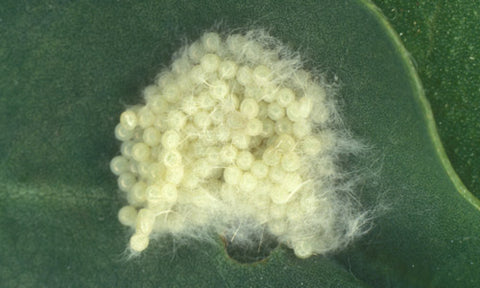
Image Credit: entnemdept.ufl.edu
Empty Leaves and Stems:
Caterpillars bore into succulent leaves, consuming all the fleshy parts and leaving behind empty shells.
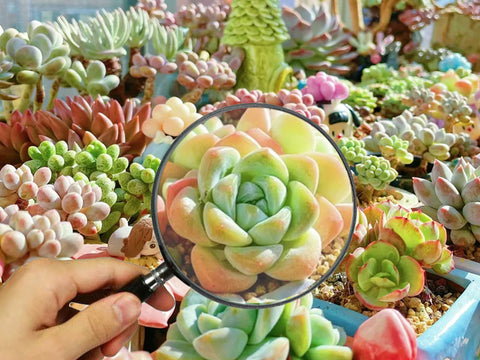
How to Salvage Chewed Succulents
If you find your succulent plant partially devoured by caterpillars, don't panic; there's a chance for survival through beheading:
1. Remove caterpillars and inspect the succulent to ensure no remnants are left.
Identify the wound, usually on the stem, and trim the succulent.
2. Trim the succulent until the stem's cut surface is healthy white.
3. Let the succulent air dry for 2-3 days, you can try a sprinkle of cinnamon powder to keep infection at bay.
4. Repot the succulent, and the healthy parts will continue to root and grow.
In Conclusion
Dealing with armyworms or caterpillars on your beloved succulent plants can be a daunting task, but armed with the right knowledge and techniques, you can effectively protect your succulent garden from these pesky invaders. Remember to stay vigilant, promptly address any signs of infestation, and employ the suggested methods to safeguard your succulents' health and beauty.



























